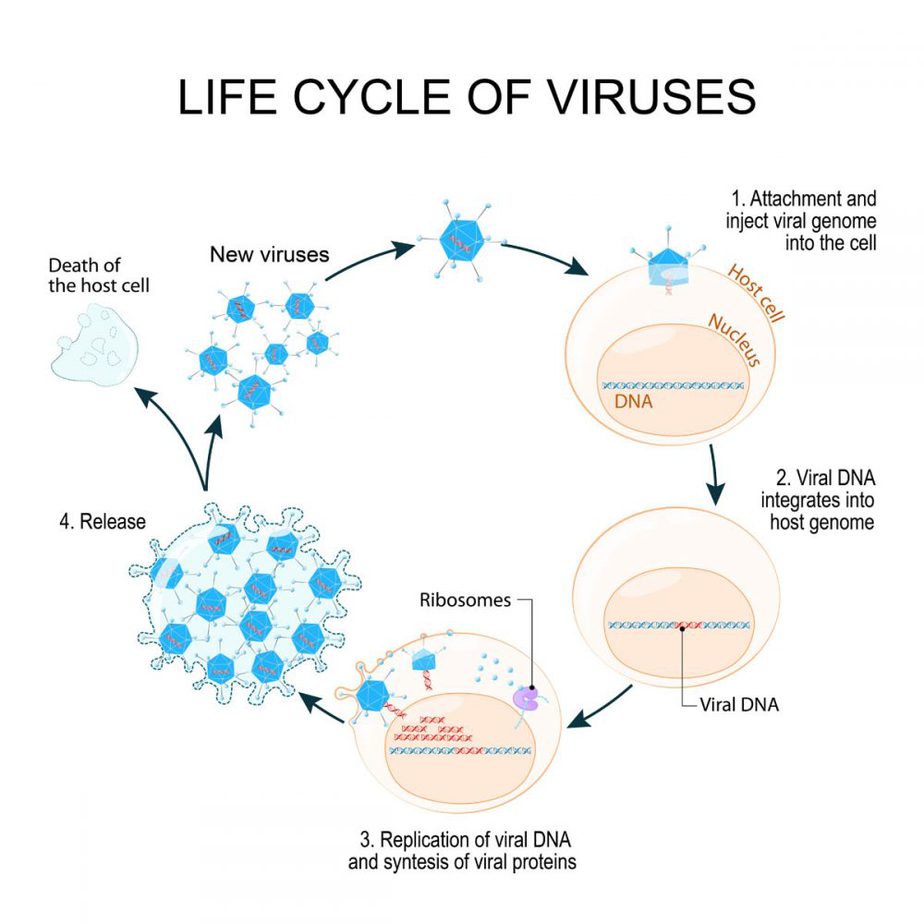The world is currently in the grip of a coronavirus pandemic (named COVID-19 by the World Health Organisation), which was first reported in Wuhan, Hubei Province, China on 31st December 2019. The virus is believed to have originated from Chinese horseshoe bats and jumped species via an intermediate host, thought to be the pangolin – a delicacy in Chinese culture. The virus then jumped from the pangolin to humans.
COVID-19 produces flu-like symptoms in people, the elderly and people with an underlying medical condition are at the greatest risk. The World Health Organisation declared novel coronavirus a Public Health Emergency of International Concern (PHEIC) on 30th January 2020 and a pandemic on 11th March 2020.
The Committee believes that it is still possible to interrupt virus spread, provided that countries put in place strong measures to detect disease early, isolate and treat cases, trace contacts, and promote social distancing measures commensurate with the risk. It is important to note that as the situation continues to evolve, so will the strategic goals and measures to prevent and reduce spread of the infection. The Committee agreed that the outbreak now meets the criteria for a Public Health Emergency of International Concern and proposed the following advice to be issued as Temporary Recommendations.
What is coronavirus?
Coronaviridae is a large family of viruses that cause disease in a range of animal and bird species. Several coronaviruses are infectious to humans and are responsible for the common cold producing mild and self-limiting symptoms in most cases. Two coronaviruses, MERS-CoV and SARS-CoV were more pathogenic, causing severe respiratory infections. SARS virus killed 774 people between 2002-2003, MERS has killed 858 people since 2012.
Viruses can infect one species only; for example, feline herpesvirus only infects cats. Herpes simplex viruses type 1 (HSV-1) and 2 (HSV-2) cause cold sores and genital herpes and infect humans and some primates. Other viruses, such as rabies and Ebola, can infect multiple species, which makes them zoonotic.
Viruses are made up of a genome (DNA or RNA) that is a blueprint with instructions for making more viruses and a protein capsid that covers the genome. Most viruses have envelopes that are made up of lipids and surface glycoproteins which are derived from the host cell membranes that help the virus evade the host immune system.
As viruses do not contain the machinery necessary to replicate, they must hijack the machinery from a host cell. To gain entry to the cell, glycoproteins on the viral envelope attach to receptors on the surface of the cell and fuse with the host membrane allowing the virus to enter the cell.
Once inside the viruses parasitise the host machinery to produce new viral progeny. The novel coronavirus uses the same receptor, angiotensin-converting enzyme 2 (ACE2), to unlock the cell as the SARS virus used.

Because viruses are not capable of multiplying without host cells, they are not considered to be living things.
Where did COVID-19 come from, and how did it jump species?
The Wuhan market sells 120 wildlife animals across 75 species which includes badgers, hedgehogs, wolf pups, bats, snakes, peacocks and even koalas. Stressed and often injured animals in cramped and unsanitary conditions, with cages containing different species stacked on top of each other, trading body fluids and feces. Wild and exotic animals can carry viruses that humans ordinarily wouldn’t encounter.
This mix of animals, in cramped and unsanitary conditions, is a recipe for disaster; viruses are shed faster from immuncompromised and stressed animals, which makes it easier for viruses to mingle and potentially make new strains and jump species.

Image credit, Muyi Xiao
The Lancet analysed ten genome sequences taken from the bronchoalveolar lavage fluid of nine patients. 99.98% of the sequences were the same, which tells us that the virus is new in the human population as viruses mutate quickly. They also found that 88% of the nCoV-2019 genome had the identity of two bat-derived SARS-like coronaviruses.
While the viruses may have jumped from animals to people, the main route of infection in people is direct contact with an infected person or fomites (contaminated objects such as door handles and surfaces) and aerosols. COVID-19 can remain suspended in the air for three hours, copper for 4 hours, cardboard up to 24 hours and on plastic and stainless steel up to 72 hours.
Symptoms of COVID-19
Symptoms COVID-19 can range dramatically between individuals from asymptomatic to life-threatening. Individuals with mild symptoms may experience fever, cough, shortness of breath, muscle aches, headache, sore throat and chest pain. As the infection moves to the lungs breathing difficulty develops. Any individual who is having difficulty breathing should seek medical attention urgently.
Please do not present to your local doctor or emergency. Phone and explain your symptoms so that the relevant medical authorities can take the necessary precautions to keep themselves safe.
Can cats and dogs infect humans with COVID-19?
There are alarming reports of pet owners are throwing cats and dogs out of windows due to fear that they can transmit novel coronavirus. As we know, there are many, many subtypes of coronavirus, some of which do infect cats and dogs, but these strains are non-infectious to humans because they are species-specific. The World Health Organisation states the following:
At present, there is no evidence that companion animals/pets such as dogs or cats can be infected with the new coronavirus. However, it is always a good idea to wash your hands with soap and water after contact with pets. This protects you against various common bacteria such as E.coli and Salmonella that can pass between pets and humans.
Feline coronavirus (FCoVs) infection is usually subclinical, but from time to time, the feline coronavirus mutates, causing feline infectious peritonitis. There is no treatment for FIP, and the disease is almost always fatal. We still don’t know what causes the feline coronavirus to mutate into a deadly form in cats, but we do know that canine and feline coronavirus is not contagious to humans.
What should you do if you are worried you have been exposed to COVID-19?
Contact your doctor and inform them you may have been exposed, they will provide information on what steps to take next to ensure the safety of the general public.
The quarantine period is 14 days, self-isolate during this period to avoid potentially infecting others. Novel coronavirus may be infectious before symptoms develop.
Keeping safe
Once again, there is no reason to surrender cats or dogs as they have not been found to transmit novel coronavirus. Ways to reduce the risk of transmission of infection include the following:
- Each country is issuing its own protocol in regards to what citizens can and can’t do, check for updates and follow the rules
- If you do have to go out, maintain a social distance of six feet from other people
- Frequently wash hands with soap and water for thirty seconds, especially before preparing food, eating, after contact with animals and when you return home from an outing
- Use hand sanitiser if you cannot wash your hands with soap and water
- Avoid handling cash and pay with tap and go where possible
- Disinfect high-touch areas such as door handles, kitchen and bathroom benches and mobile phones
- Do not touch your mouth, nose or eyes
- Do not go to work or school if you are sick and avoid public spaces to reduce the risk of infecting others
- Avoid contact with people suffering from respiratory infections
- Sneeze into the crook of your elbow
- Dispose of tissues in a sealed bin
- Only leave the home if you absolutely must and where practical, designate one person to buy groceries, don’t bring the entire family
- Avoid unnecessary contact with farm or wild animals
- Make sure meat is thoroughly cooked before consuming
- Wear a mask in public
Updates
01-04-2020 – A cat in Belgium tested positive for COVID-19 after contracting the virus from its owner who tested positive herself after a recent visit to Italy. Clinical signs including vomiting, diarrhea and difficulty breathing developed a week after the owner became ill and tests of the cat’s feces and vomit revealed traces of the virus.
This is the first human to cat transmission, but Steven Van Gucht, a virologist for the COVID epidemic in Belgium told Live Science that there are no reports of pets passing the virus onto humans and cats do not play a significant role in the propagation of the virus.
To date, all transmission has been human to human after the initial jump from bats to pangolins. The Organisation for Animal Health (OIE) has updated its questions and answers page and state
“No evidence to suggest that animals infected by humans are playing a role in the spread of COVID-19. Human outbreaks are driven by person-to-person contact.”
Both human and cat are recovering.
Where to get information
There are still a lot of unanswered questions regarding novel coronavirus with authorities working hard to contain the virus and learn more.
This page will be updated regularly to reflect new information as it comes to light.

